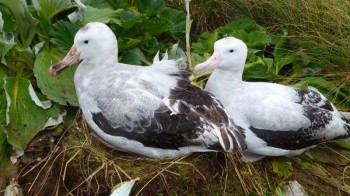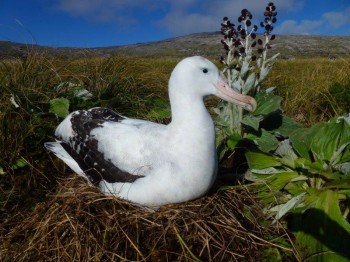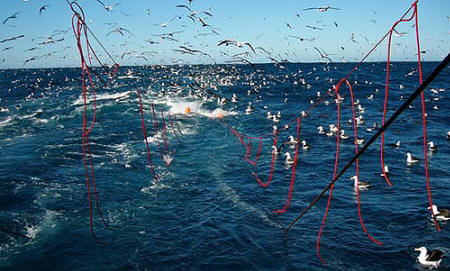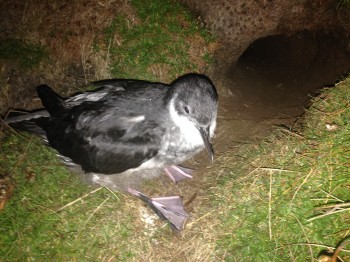Kath Walker and Graeme Elliott of Albatross Research have produced a report for the New Zealand Department of Conservation’s Conservation Services Programme that analyses the suitability of various census methods, including both ground counts and aerial photography, to estimate the total number of breeding pairs of ACAP-listed and Vulnerable Gibson's Antipodean Albatrosses Diomedea antipodensis gibsoni on Adams Island in the Auckland Island Group.
The “report summarizes our investigations into the problems and potential solutions to the difficulties of obtaining an accurate count of this particular species, and provides some suggestions on the most suitable technique to use in a new estimation of total breeding population size.”

A Gibson's Antipodean Albatross pair on Adams Island, photograph by Colin O'Donnell
Click here to access a related report on surveying Gibson's Antipodean Albatrosses by aerial photography on Adams Island.
The assessment of census techniques is informing a proposed survey to estimate the population size of Gibson's Antipodean Albatrosses and collect data to estimate adult survival and other demographic parameters on Adams Island during 2015/16 (click here).
Reference:
Walker, K. & Elliott, G. 2015. Gibson’s wandering albatross: analysis of census techniques. Report prepared for Department of Conservation. [Nelson]: Albatross Research. 10 pp.
John Cooper, ACAP Information Officer, 21 September 2015

 English
English  Français
Français  Español
Español 


